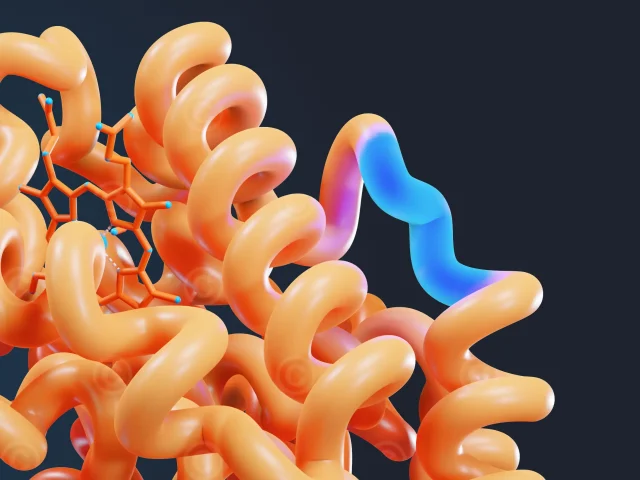Background
The Wnt signaling pathway is a central mechanism in cell biology and plays an important role both in normal development and in the pathogenesis of various diseases. The protein DKK3 (Dickkopf-3) is involved in these processes.
Changes in the concentration of DKK3 protein in urine allow conclusions to be drawn about possible diseases. The protein therefore serves as an indicator for the diagnosis and monitoring of chronic kidney damage, among other things.
Project description
In the first illustration, we created an overview of the Wnt signaling pathway using the example of a kidney cell in fibrosis of the kidney. As soon as a Wnt ligand binds to its receptor and the co-receptor “LRP5/6”, the protein DVL is activated. This reduces the degradation of ß-catenin in the cell. The accumulated ß-catenin migrates into the cell nucleus, where it binds to transcription factors of the TCF/LEF family and activates the transcription of target genes. Since the specific role of the DKK3 protein in the Wnt signalling pathway has not yet been conclusively clarified, the DKK3 protein was only visualized outside the cell in the illustration.

In the second illustration, we show a renal tubule whose cells are under stress: activated fibroblasts and macrophages can be seen, as well as T cells and the accumulation of hyaluronic acid. The stressed cells release DKK3 into the urine, the concentration of which is then used as a biomarker in a urine analysis.
Diagram “a” shows the concentration of DKK3 in patients with chronic kidney disease (CKD) compared to the average population. The DKK3 concentration is significantly higher in patients with the disease than in healthy people (population average).
Diagram “b” deals with DKK3 concentration and the estimated glomerular filtration rate (eGFR) – i.e. a value for the functional capacity of the kidney. Different DKK3 concentrations in the urine are shown over a period of 12 months. It is shown that the “estimated glomerular filtration rate” (kidney function) decreases over the period, the more DKK3 is detected in urine tests.

Project details DKK3 – Biomarker kidney disease
Content: 2 illustrations – Language EN
Use: Presentations, publications
Specs: DIN A5
Client: Dr. Stefan Schunk, Universität des Saarlandes
The rights of use of the images shown here are held by the client; use is not permitted. Images are protected by watermarks.

















































